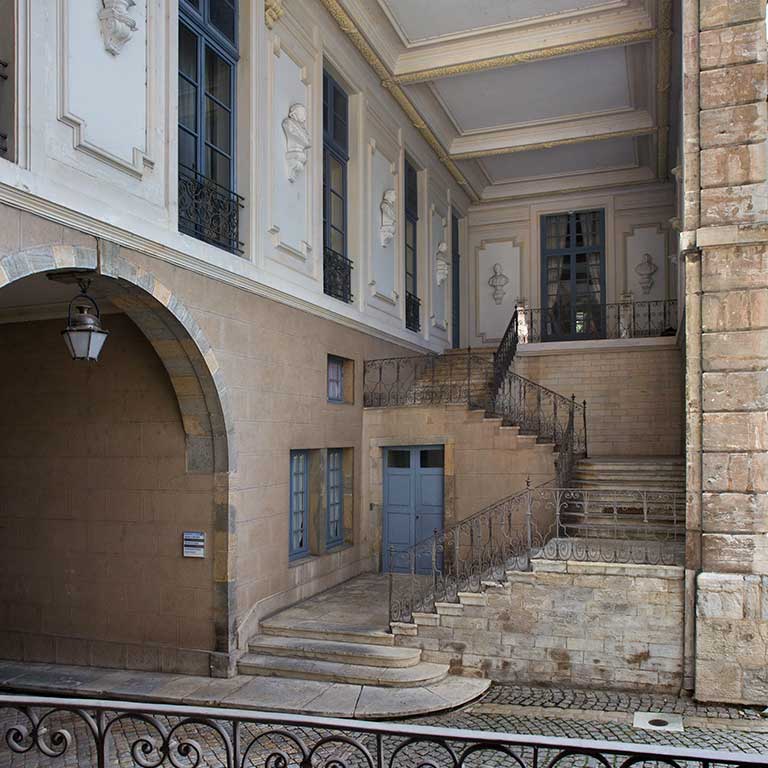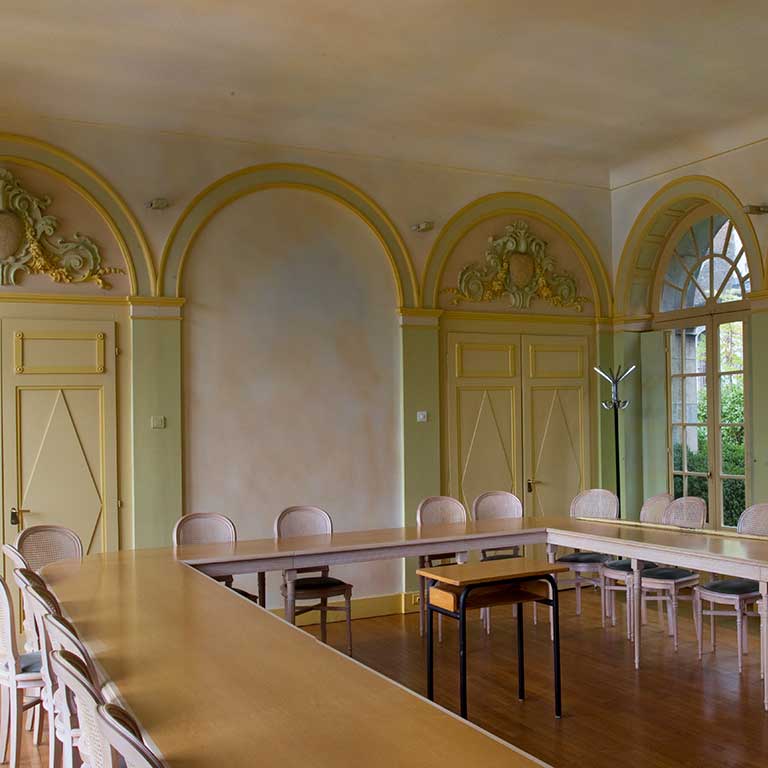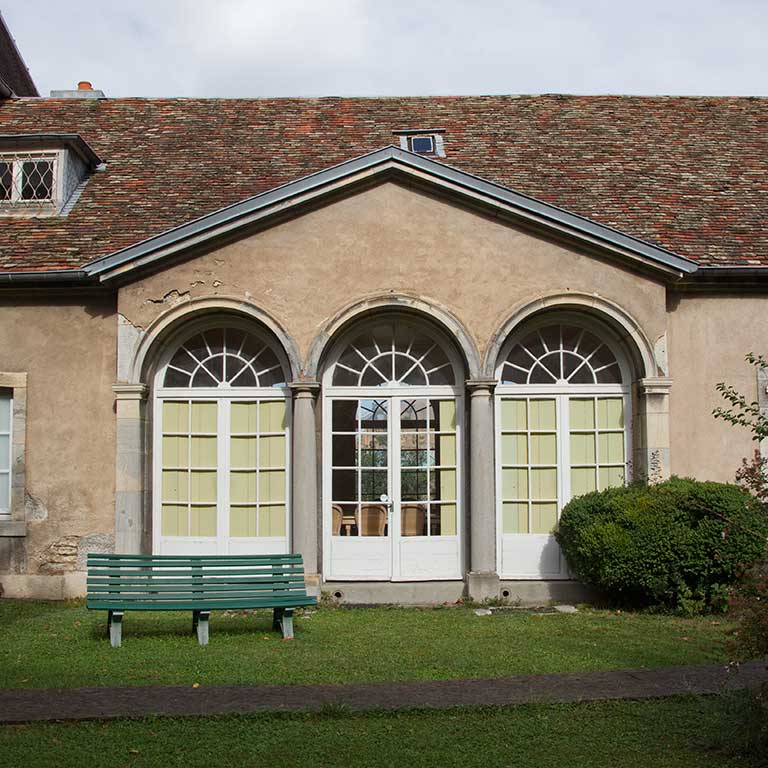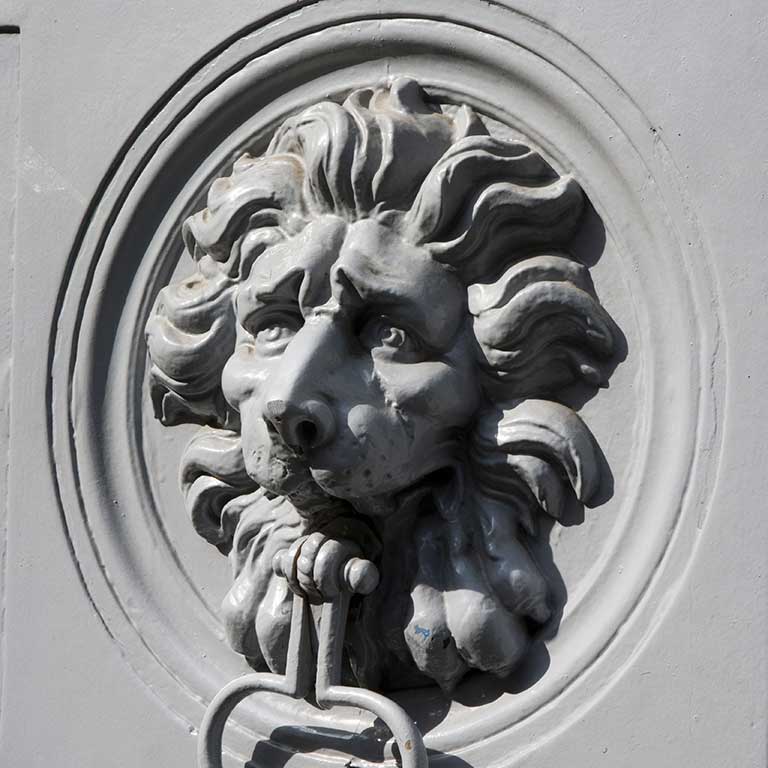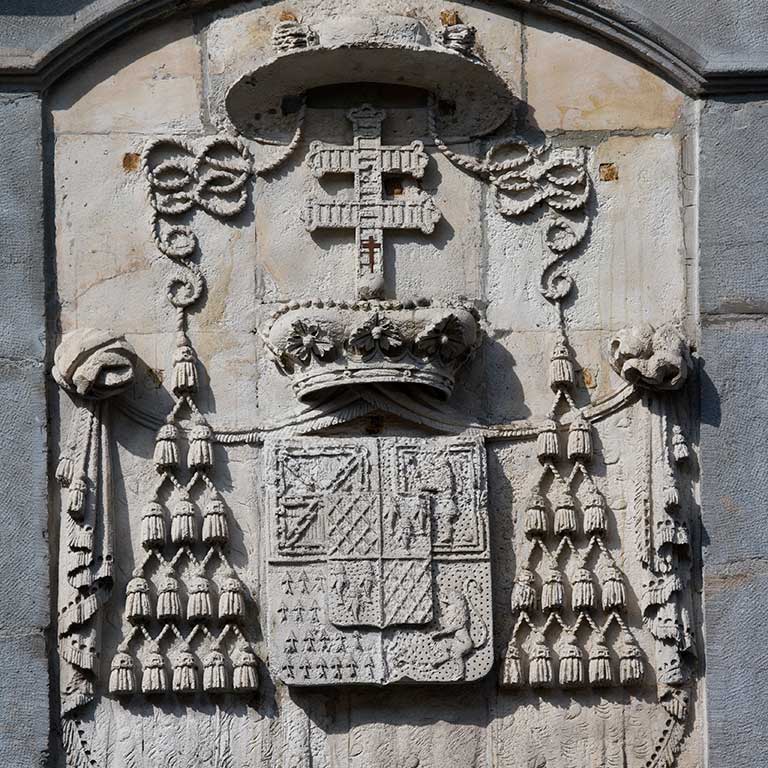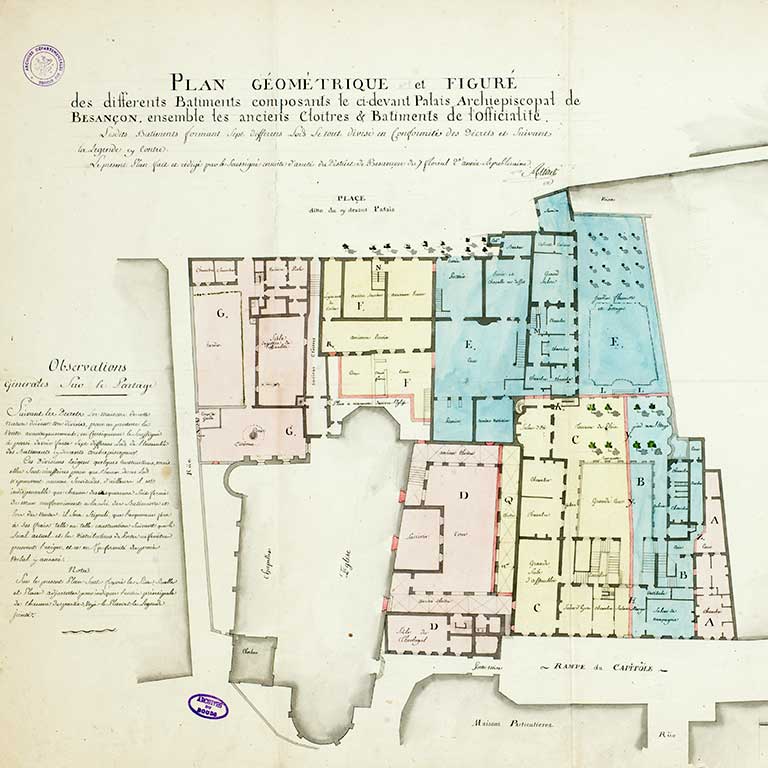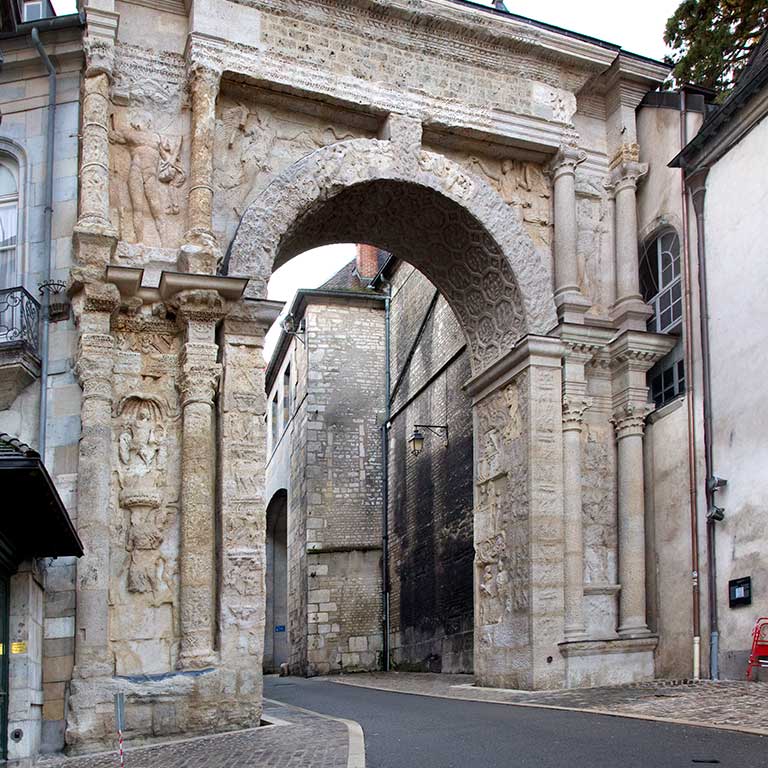Canon François-Joseph de Grammont became archbishop in 1698. In the early 1700s, he converted several houses into the new Archbishop’s Palace. Entry was by the carriage entrance and to the left, you can still see the open staircase of honour in cut stone with a wrought iron railing. Going deeper into the courtyard there is a terrace garden where an orangery was built in the 19th century.
The long street facade was not made with cut stone, as were most of the houses in the city centre; it was made with plastered rough-hewn stone, which contrasts markedly with the highly decorated dormer windows. The portal doors are sculpted and flanked by pilasters. Above, you can see Louis-Auguste de Rohan Chabot’s coat of arms that he had sculpted in 1828 when he became Archbishop of the Besançon Diocese.
The Palace wall is flush against The Black Gate, which is a triumphal arch dating from 175 CE. It is a Roman monument, exceptional because of its considerable height and beautiful carvings. Today, it is fitted between the palace (ceded to the local education authority or “Rectorat” in 1906) and the present archbishop’s see, which since 1910 has been at Nos. 3-5, rue de la Convention.
